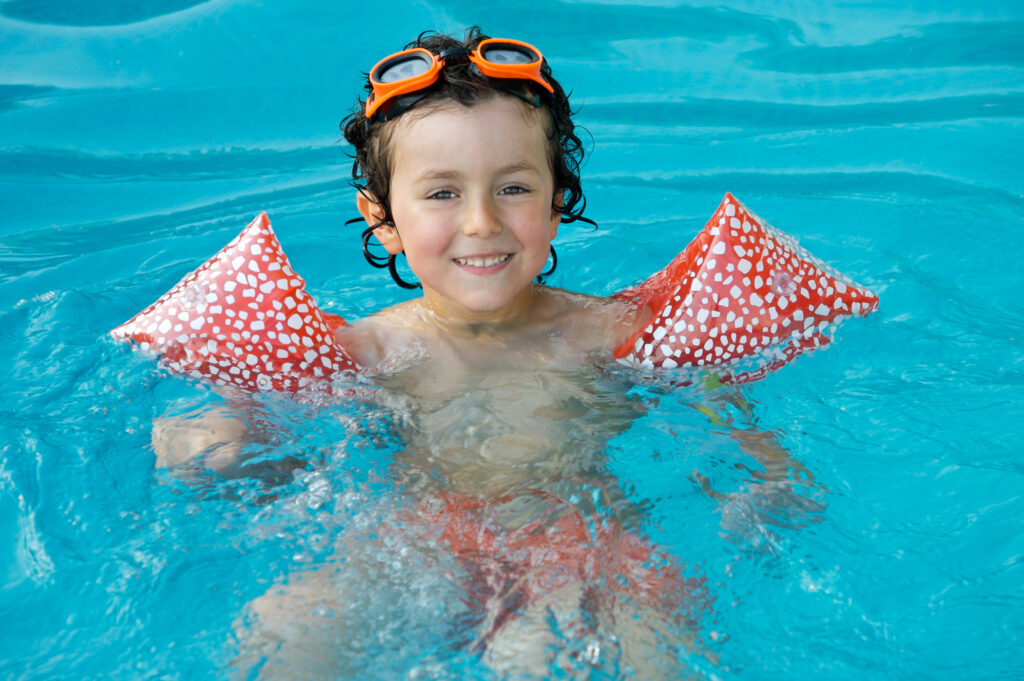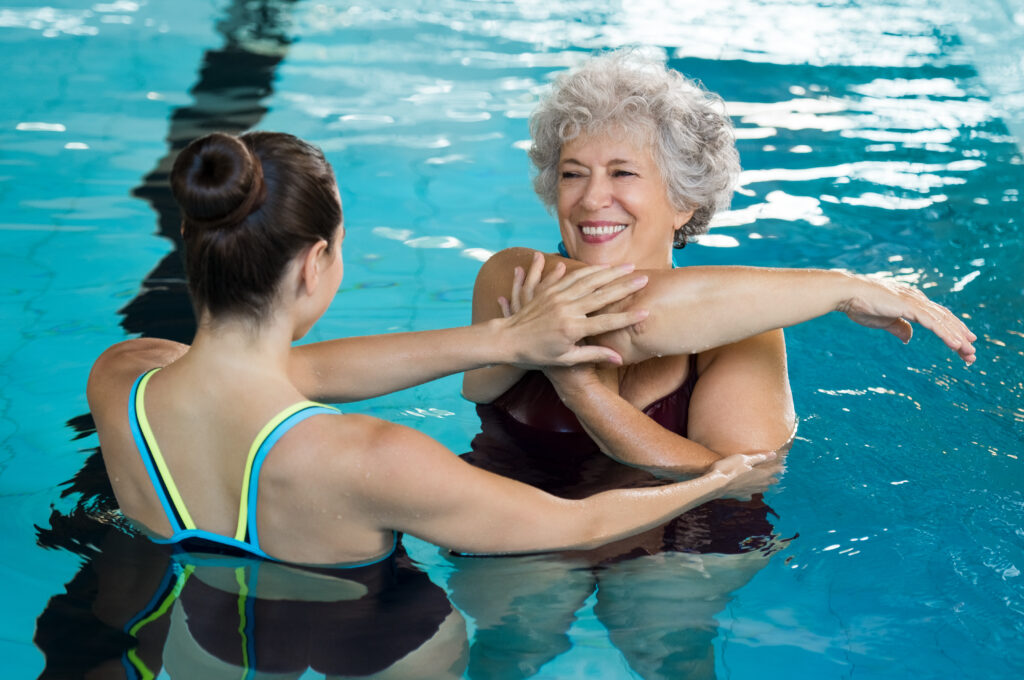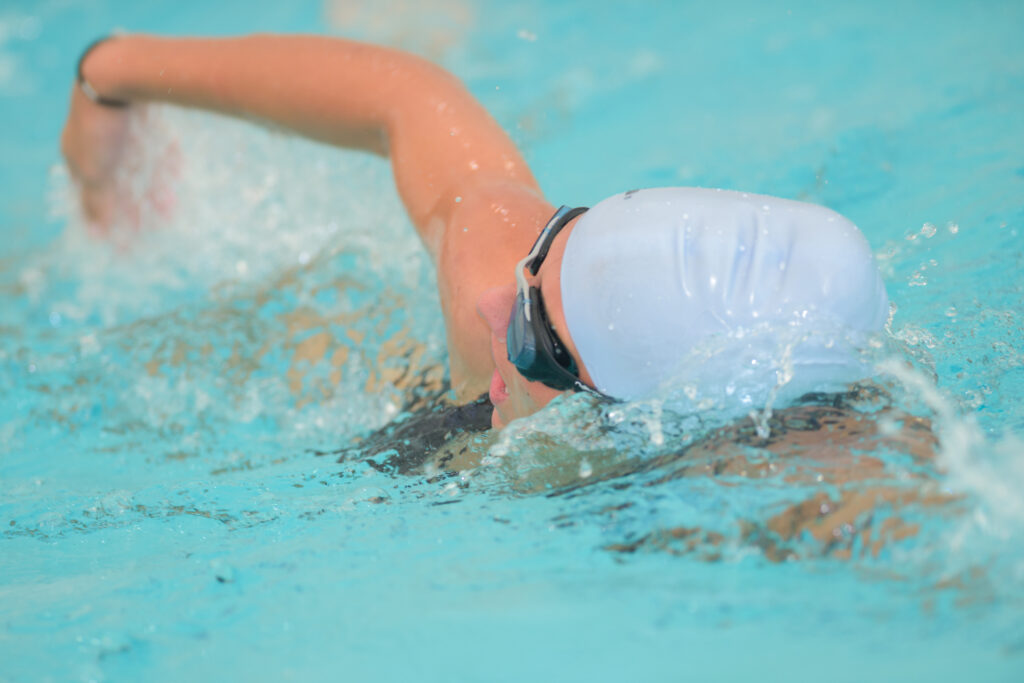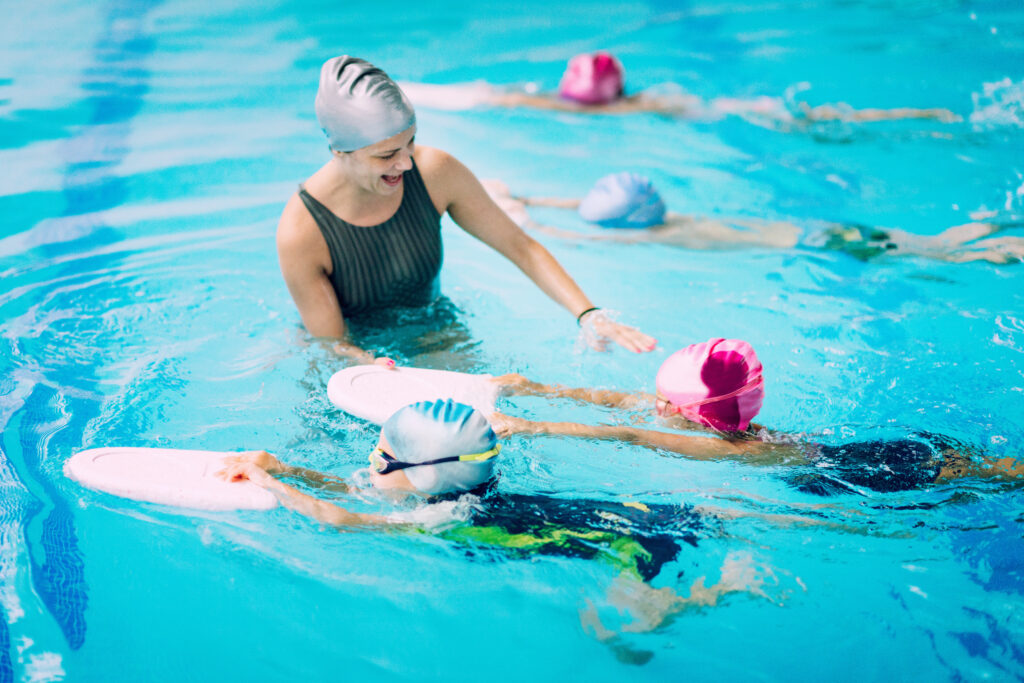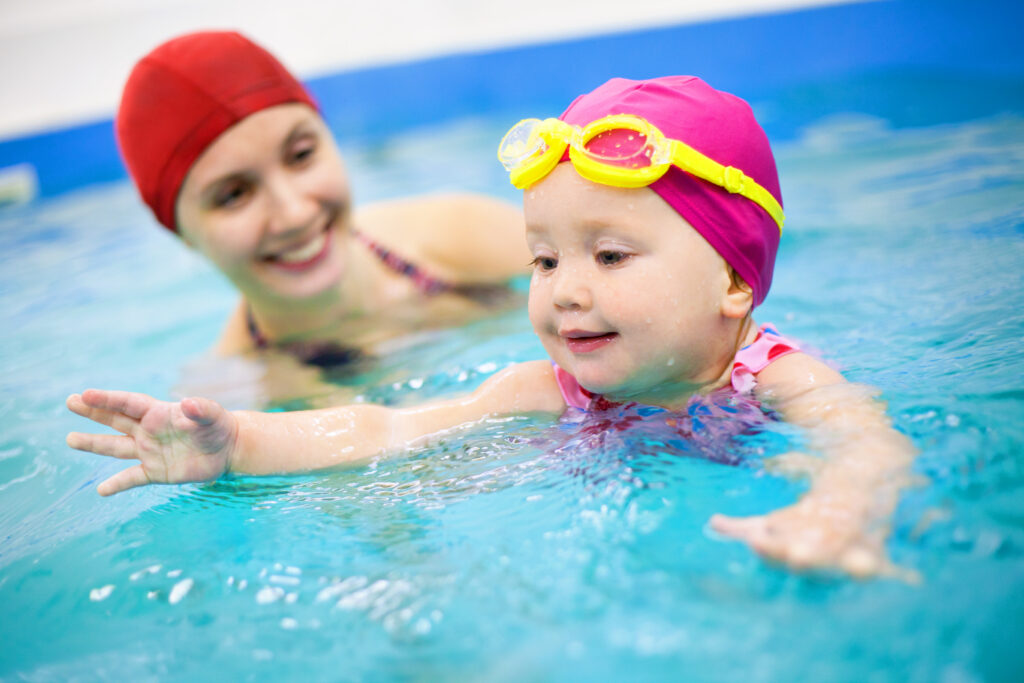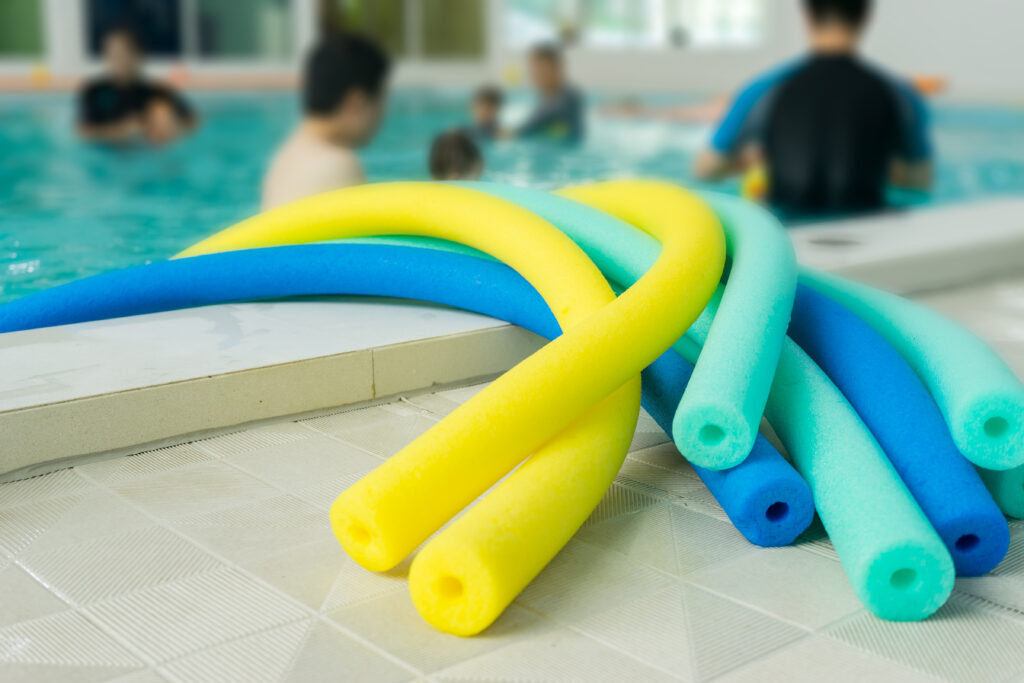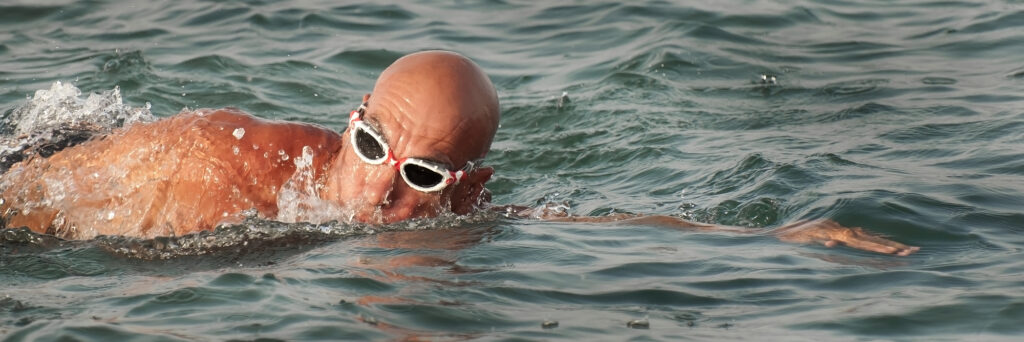Swimming is an essential life skill that every child should learn. It not only helps children stay physically active but also builds confidence, improves coordination, and promotes safety in and around water. However, as parents, we often wonder what the best way is to introduce our children to swimming. Should we teach them back floats or arm floats?
Understanding Swimming Aids is crucial to determine which one is best for your child. Arm floats are inflatable devices that go around a child’s upper arms to provide buoyancy and support. On the other hand, back floats are foam or inflatable devices that go on a child’s back to keep them afloat. While both swimming aids serve the same purpose, they have different benefits and drawbacks.
Age Considerations and Safety Measures are important factors to keep in mind when choosing the right swimming aid for your child. It is recommended that children under four years old use arm floats, while children over four can use back floats. However, it is crucial to remember that swimming aids are not a substitute for adult supervision. Children must be supervised at all times when in or near water to prevent accidents.
Key Takeaways
- Understanding the different types of swimming aids is essential to determine which one is best for your child.
- Age and safety measures should be considered when choosing the right swimming aid for your child.
- Adult supervision is crucial to ensure the safety of children when in or near water.
Understanding Swimming Aids
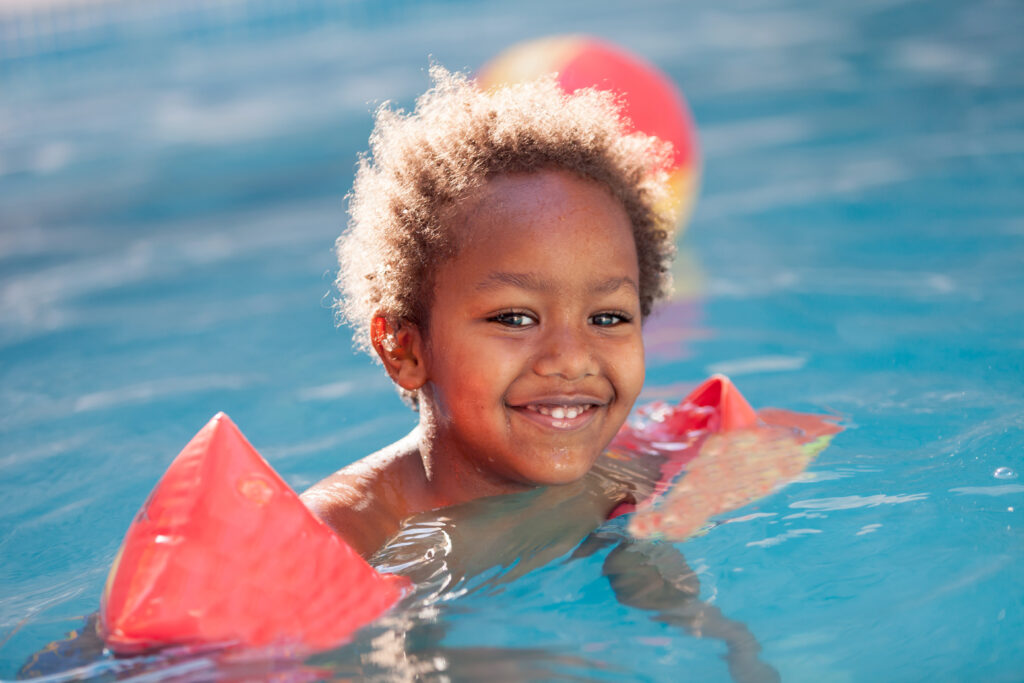
When it comes to teaching children to swim, there are a variety of swimming aids available to help them feel more comfortable and confident in the water. In this section, we will discuss two of the most common types of swimming aids: armbands and back floats.
Armbands
Armbands, also known as arm floats, are inflatable bands that go around a child’s upper arms to provide buoyancy in the water. They are a popular choice for young children who are just learning to swim because they allow the child to move their arms and legs freely while keeping their head above water.
Armbands come in a variety of sizes and styles, so it’s important to choose the right size for your child. If the armbands are too loose, they may slip off in the water, while if they are too tight, they may restrict your child’s movement. It’s also important to supervise your child closely while they are wearing armbands to ensure their safety.
Back Floats
Back floats are another popular type of swimming aid for children. They are designed to help children float on their backs, which can be a difficult skill to master when learning to swim. Back floats typically consist of a foam or inflatable device that is placed on the child’s back, with straps or other attachments to keep it in place.
Back floats can be a good choice for children who are comfortable in the water but need help with their backstroke or floating skills. They allow the child to focus on their body position and technique without worrying about staying afloat.
When choosing a back float, it’s important to consider the size and weight of the device, as well as any straps or attachments that may be uncomfortable for your child. It’s also important to supervise your child closely while they are using a back float to ensure their safety.
Overall, both armbands and back floats can be effective swimming aids for children, depending on their skill level and needs. It’s important to choose the right aid for your child and to supervise them closely while they are in the water. For a comparison guide of different flotation devices, check out Simply Swim UK’s guide.
Learning to Swim
Learning to swim is an essential life skill for children. It not only helps them stay safe in and around water but also improves their physical and mental health. There are different methods of teaching children how to swim, and choosing the right one can make the learning process more effective and enjoyable.
Learning Process
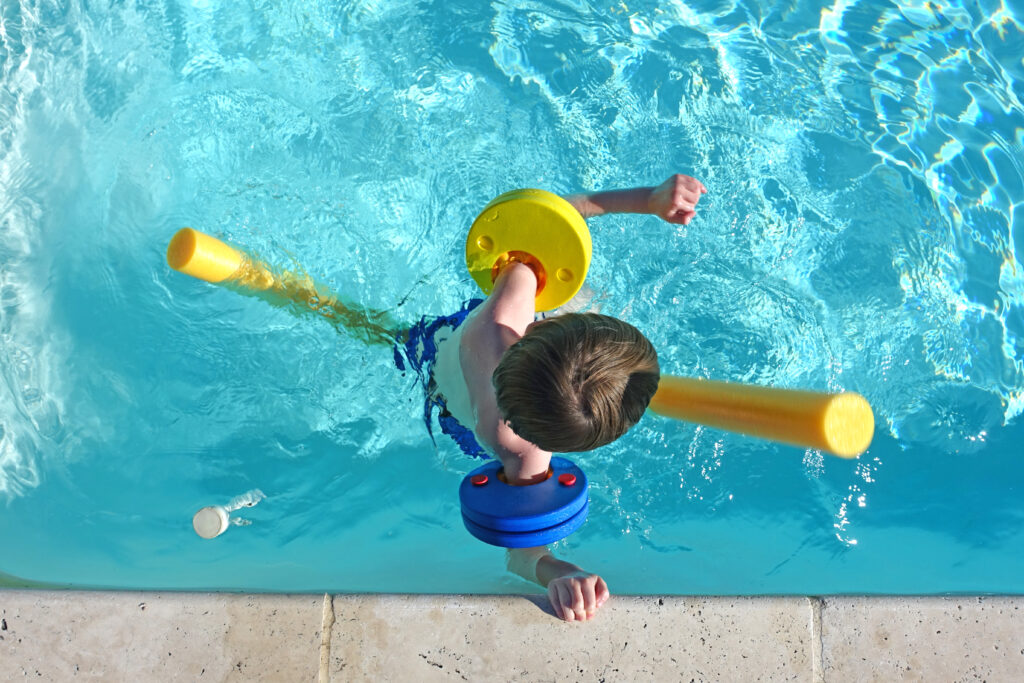
When it comes to teaching children how to swim, it’s important to be patient and create a safe and supportive environment. The learning process can be broken down into different stages, and children progress at their own pace.
One of the first skills children learn is to float on their back. Back floats help children feel comfortable and relaxed in the water and provide them with a sense of buoyancy. There are different types of floats that children can use, including back floats and arm floats.
Back floats are a simple and easy-to-use swimming float that straps onto the back of your child, providing them with extra buoyancy to practice their swimming strokes and basic skills. They are a great option for children who are just starting to learn how to swim and need extra support.
Arm floats, on the other hand, are inflatable floats that go around a child’s arms to provide them with extra buoyancy. They are a popular choice for parents because they are easy to use and can be adjusted to fit a child’s size. However, arm floats can give children a false sense of security and may hinder their ability to learn proper swimming techniques.
Swim Schools
Swim schools are a great option for children who want to learn how to swim in a structured and supportive environment. Swim schools offer different classes for children of different ages and skill levels, and they have trained instructors who can provide individualized attention and feedback.
Swim schools also provide children with access to different types of swimming equipment, such as back floats, kickboards, and pool noodles, which can help them learn proper swimming techniques and build their confidence in the water.
Overall, whether you choose back floats or arm floats, learning to swim is an important life skill that requires patience and support. By creating a safe and supportive environment and using the right equipment, children can learn how to swim and enjoy all the benefits that come with it.
Age Considerations
When it comes to teaching children to swim, age is an important consideration. Different age groups have different needs and abilities, and it is important to take these into account when choosing the best swimming aids for your child. In this section, we will discuss age considerations for toddlers, babies, and non-swimmers.
Toddlers
Toddlers are generally between the ages of 1 and 3 years old. At this age, they are developing their motor skills and coordination, and they may have some fear of the water. It is important to choose swimming aids that will help them feel safe and secure in the water, while also encouraging them to develop their swimming skills.
Back floats are a good option for toddlers, as they provide buoyancy and support for their back and neck. This can help them to feel more confident in the water and allow them to practice their swimming strokes. Arm floats can also be used, but they should be used in conjunction with a back float to ensure that the child is properly supported.
Babies
Babies are typically between the ages of 6 months and 1 year old. At this age, they are still developing their motor skills and coordination, and they may not be able to hold their head up or sit up on their own. It is important to choose swimming aids that will provide support for their head and neck, while also allowing them to move their arms and legs freely.
Swim rings or inflatable neck floats are a good option for babies, as they provide support for the head and neck while allowing the baby to move their arms and legs freely. However, it is important to supervise babies closely when using swimming aids, as they can be at risk of drowning if they are not properly supported.
Non-Swimmers
Non-swimmers include children of all ages who are not yet able to swim independently. It is important to choose swimming aids that will provide buoyancy and support, while also allowing the child to practice their swimming skills.
Back floats are a good option for non-swimmers of all ages, as they provide support for the back and neck and allow the child to practice their swimming strokes. Arm floats can also be used, but they should be used in conjunction with a back float to ensure that the child is properly supported.
In conclusion, when choosing swimming aids for children, it is important to take age into consideration. Toddlers, babies, and non-swimmers all have different needs and abilities, and it is important to choose swimming aids that will provide the necessary support and encouragement for each age group.
Safety Measures
When it comes to teaching children how to swim, safety should always be our top priority. In this section, we will discuss some of the safety measures that we can take to ensure that our children are safe while learning to swim.
Supervision
One of the most important safety measures is adult supervision. Children should never be left alone near water, whether it is a pool, lake, or the sea. An adult should always be present, and they should be within arm’s reach of the child at all times. Even if a child is wearing a flotation device, adult supervision is still necessary.
Safety Equipment
Another important safety measure is the use of safety equipment. Flotation devices such as life jackets and float vests can provide children with the support and confidence they need to learn how to swim. However, it is important to choose the right device for your child’s age and swimming ability. For example, a Swim Sweater or Swim Vest can be used for water exploration, while a Baby Spring Float is designed for water introduction.
In addition to flotation devices, there are other safety equipment that can be used to ensure that children are safe while swimming. For example, swimming goggles can protect their eyes from the chlorine in the pool, while a swimming cap can prevent water from entering their ears.
We should also teach our children some safety tips when it comes to swimming. For example, they should never dive into shallow water, and they should always wait for an adult to tell them when it is safe to enter the water. They should also be taught how to tread water and how to float on their back in case they get tired.
By taking these safety measures, we can ensure that our children are safe while they learn how to swim. With adult supervision, the right safety equipment, and some basic safety tips, we can help our children build confidence, support, and a love for swimming that will last a lifetime.
Swimwear for Children
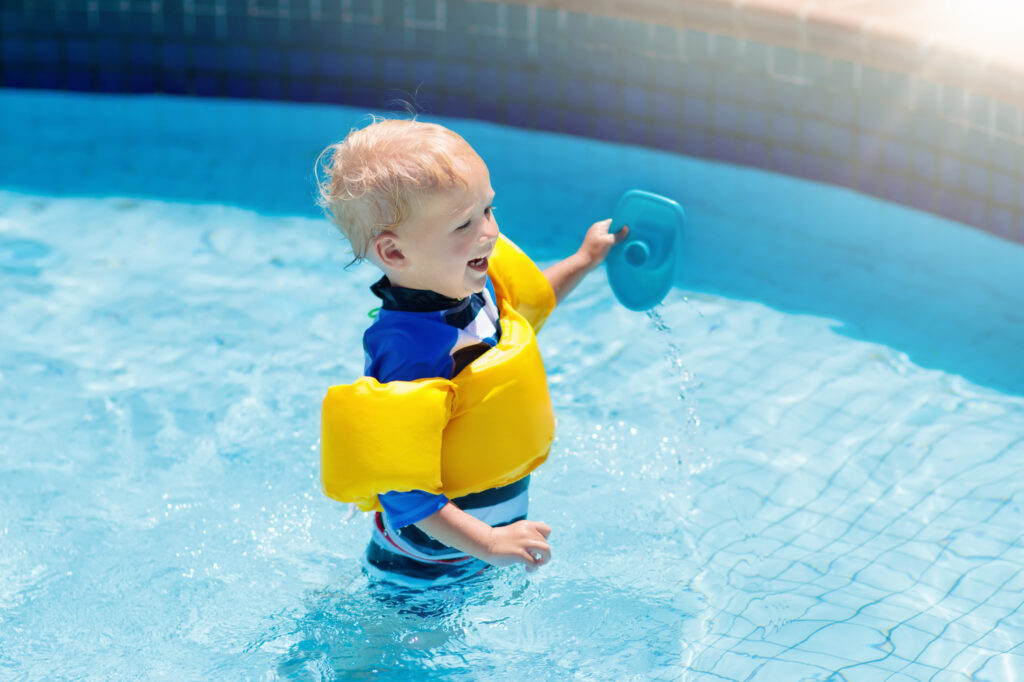
When it comes to teaching children to swim, having the right swimwear can make all the difference. Here are some options to consider:
Float Jackets
Float jackets are a popular choice for children who are just learning to swim. They provide buoyancy and support for the child’s upper body, helping them to stay afloat and maintain the correct swimming position. Some popular options include the Go Splash Swim Vest and the Go Splash Float Jacket.
Swim Vests
Swim vests are another type of buoyancy aid that can help children to learn to swim. They are designed to be worn over a swimsuit and provide extra flotation to help children stay afloat. Look for vests with a high UPF rating to protect your child’s skin from the sun’s harmful rays.
Baby Swimwear
For babies and toddlers, swimwear options include floatsuits and happy nappies. Floatsuits are buoyancy aids that are designed to hold your child in the correct learn-to-swim position. They feature an adjustable float system, so parents can remove floats as the child becomes more water confident. Happy nappies are reusable swim nappies that are designed to prevent leaks in the pool.
When choosing swimwear for your child, it’s important to consider their age, swimming ability, and the environment in which they will be swimming. Always look for swimwear that provides sun protection and fits properly to ensure maximum comfort and safety.
Additional Features
When it comes to swimming aids for children, there are a few additional features that you may want to consider. In this section, we’ll discuss two of the most common features: adjustable buoyancy and extra warmth.
Adjustable Buoyancy
Adjustable buoyancy is a feature that allows you to modify the amount of buoyancy provided by the swimming aid. This can be useful as your child becomes more confident in the water and requires less support. Some swimming aids have removable floats that allow you to adjust the buoyancy level, while others have non-removable floats that provide a fixed level of buoyancy. If you’re looking for a swimming aid with adjustable buoyancy, make sure to choose one with removable floats.
Extra Warmth
If you’re planning on taking your child swimming in cooler water, you may want to consider a swimming aid with extra warmth. Neoprene is a popular material for swimming aids as it provides excellent insulation and helps to keep your child warm in the water. Some swimming aids are designed specifically for colder water and have thicker neoprene or additional insulation to provide extra warmth.
When choosing a swimming aid with extra warmth, it’s important to consider the weight of the aid. Some swimming aids with extra insulation can be quite heavy, which may make it difficult for your child to move around in the water. Look for a swimming aid that provides extra warmth without adding too much weight.
In summary, adjustable buoyancy and extra warmth are two additional features to consider when choosing a swimming aid for your child. If you’re looking for a swimming aid with adjustable buoyancy, make sure to choose one with removable floats. For extra warmth, consider a swimming aid made from neoprene or with additional insulation, but be mindful of the weight of the aid.
Other Considerations
When it comes to choosing between back floats and arm floats for children learning to swim, there are several other factors to consider besides the effectiveness of each option. Here are some other important considerations to keep in mind:
Comfort
One of the most important factors to consider when choosing between back floats and arm floats for children is comfort. Back floats tend to be more comfortable for children as they do not restrict arm movement and do not rub against the skin. Arm floats, on the other hand, can sometimes be uncomfortable as they can rub against the skin and cause irritation.
Independence
Another factor to consider is independence. Back floats allow children to move their arms and legs freely, which can help them develop a greater sense of independence in the water. Arm floats, on the other hand, can be restrictive and may make children feel more dependent on the device.
Range of Movement
When it comes to learning to swim, it is important for children to have a full range of movement. Back floats allow children to move their arms and legs freely, which is important for developing proper swimming technique. Arm floats, on the other hand, can restrict movement and may not allow children to develop proper technique.
Affordability
Finally, affordability is an important consideration when choosing between back floats and arm floats. While both options are relatively affordable, back floats tend to be slightly more expensive than arm floats. However, back floats are often a better investment as they can be used for a longer period of time and are more versatile than arm floats.
Overall, when choosing between back floats and arm floats for children learning to swim, it is important to consider factors such as comfort, independence, range of movement, and affordability. By taking these factors into account, you can make an informed decision that will help your child learn to swim safely and effectively.
Best Brands and Products
When it comes to choosing the best swimming aids for children, there are many brands and products to consider. In this section, we will take a look at two of the most popular brands for children’s swimming aids: Zoggs and Nabaiji.
Zoggs
Zoggs is a well-known brand in the swimming world, and they offer a range of swimming aids for children of all ages and abilities. One of their most popular products is the Go Splash Swim Vest, which is designed for children who are learning to swim. This vest provides buoyancy and helps to keep children in the correct swimming position. It is also adjustable, so it can grow with your child.
Another popular product from Zoggs is the Go Splash Float Jacket. This jacket is designed for children who are confident in the water but still need some assistance with buoyancy. It has removable floats, so you can adjust the level of buoyancy as your child becomes more confident.
Nabaiji
Nabaiji is a brand that is known for its innovative and high-quality swimming aids. One of their most popular products is the Nabaiji Armbands. These armbands are designed for children who are just starting to learn to swim. They are easy to put on and take off, and they provide a good level of buoyancy.
Another popular product from Nabaiji is the Nabaiji Swim Belt. This belt is designed for children who are confident in the water but still need some assistance with buoyancy. It is adjustable, so it can grow with your child, and it provides a good level of support without restricting movement.
Overall, both Zoggs and Nabaiji offer a range of high-quality swimming aids for children. Whether you choose a swim vest, a float jacket, armbands, or a swim belt, it is important to choose a product that is appropriate for your child’s age and ability level. With the right swimming aid, your child can learn to swim with confidence and have fun in the water.
Conclusion
After considering the benefits and drawbacks of back floats and arm floats for children learning to swim, we believe that both options can be useful depending on the child’s age and ability level.
For very young children who are just getting used to the water, arm floats or other buoyancy aids can be helpful for building confidence and allowing them to explore the water in a safe way. However, as children get older and more confident, it’s important to encourage them to learn to swim without relying on these aids.
Back floats can be a useful tool for teaching children how to float on their backs, which is an important skill for water safety. However, they may not be as effective for helping children learn to swim independently as arm floats or other buoyancy aids.
Ultimately, the best approach will depend on the individual child and their abilities. It’s important to work with a qualified swimming instructor who can provide guidance and support as your child learns to swim.
If you’re interested in signing up your child for swimming lessons, be sure to look for offers or news about local swim schools or community classes. With the right support and guidance, your child can develop the skills and confidence they need to enjoy the water safely and confidently for years to come.
Frequently Asked Questions
What are the benefits of using back floats for children learning to swim?
Back floats are an excellent way to teach children how to float on their backs. This position allows children to relax and breathe easily while they learn to swim. Back floats also help children build confidence in the water and develop their balance and coordination. Using back floats can also help children overcome their fear of water and become more comfortable in the pool.
What are the advantages of using arm floats for children learning to swim?
Arm floats are a popular choice for parents because they are easy to use and provide children with a sense of independence in the water. Arm floats can help children stay afloat while they learn to swim and give them the freedom to move their arms and legs. This can help children build their strength and coordination in the water. However, it is important to note that arm floats should not be used as a substitute for adult supervision.
Which is safer for children learning to swim, back floats or arm floats?
Both back floats and arm floats can be safe for children learning to swim when used properly. However, it is important to remember that no flotation device can replace the need for adult supervision. Children should always be supervised when they are in or around water, regardless of whether they are wearing a flotation device.
What are the best swimming aids for toddlers learning to swim?
There are many swimming aids available for toddlers learning to swim, including back floats, arm floats, swim vests, and swim rings. When choosing a swimming aid for your toddler, it is important to consider their age, size, and swimming ability. You should also look for swimming aids that are comfortable, adjustable, and provide adequate support.
What are the best swimming aids for children aged 3 in the UK?
For children aged 3 in the UK, swim vests and swim rings are popular choices. Swim vests provide children with the support they need to learn to swim and can be adjusted as their swimming ability improves. Swim rings can also be a fun and effective way to help children build their confidence in the water.
Are float discs a better option than arm bands for children learning to swim?
Float discs and arm bands are both effective swimming aids for children learning to swim. However, float discs may be a better option for children who are uncomfortable wearing arm bands or who have sensitive skin. Float discs can be worn on the upper arms or around the waist and provide children with the support they need to stay afloat while they learn to swim.

